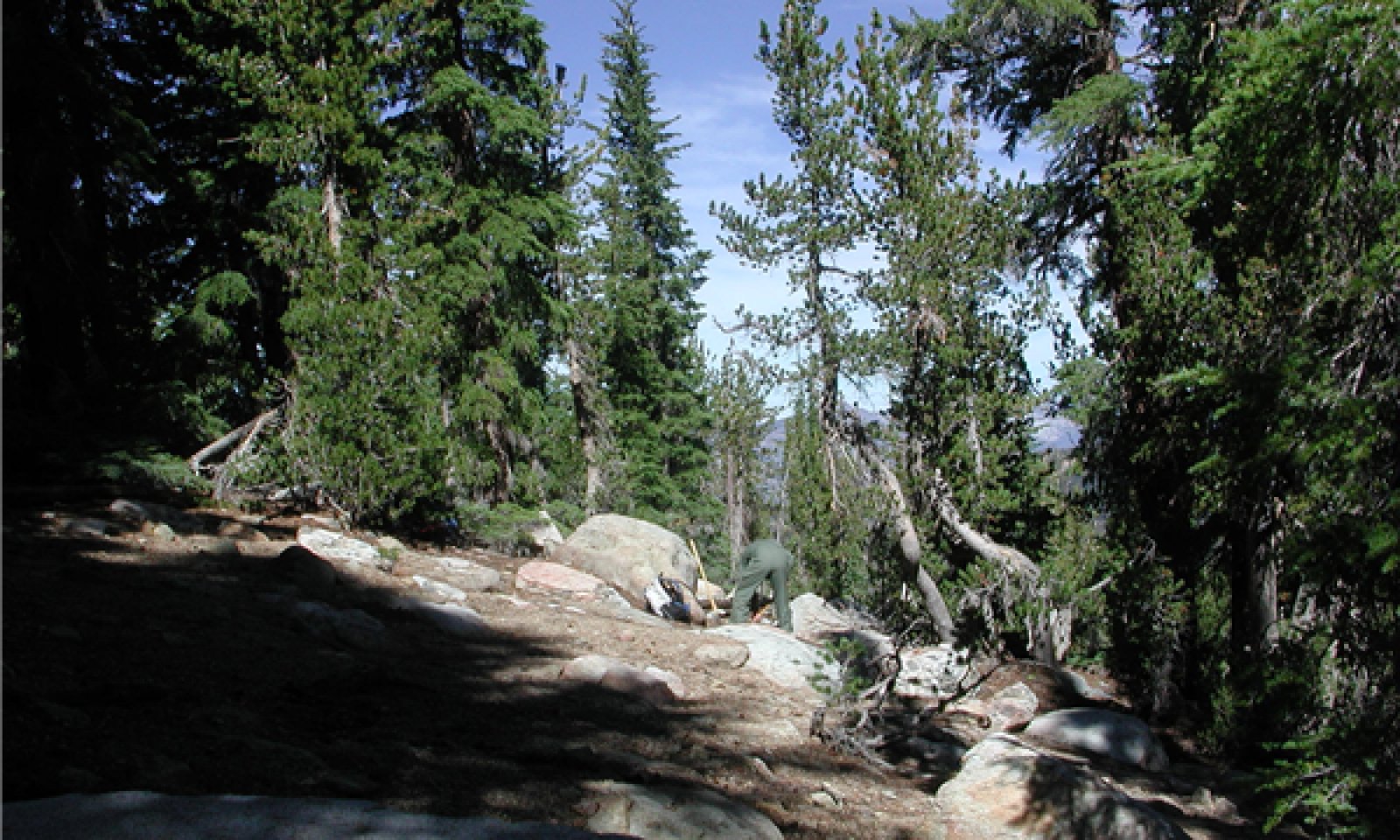
Cryic Sandy North Apsect Mountain Slopes
Scenario model
Current ecosystem state
Select a state
Management practices/drivers
Select a transition or restoration pathway
- Transition T1a More details
- Restoration pathway R2a More details
- Transition T2a More details
- Restoration pathway R3a More details
-
No transition or restoration pathway between the selected states has been described
Target ecosystem state
Select a state
State 1
Reference



Description
This state represents the reference conditions for this ecological site. A portion of this ecological site exists in this state in stands that do not show symptoms of WPBR.
Submodel
Description
This state has developed with the introduction of the non-native white pine blister rust. The majority of this ecological site exists in this state, but percent infection in the stand is relatively low (1-19 percent), and degree of stem girdling is low (Maloney et al. 2012).
Submodel
Mechanism
This transition is triggered by infection of whitebark pine by Cronartium ribicola, cause of white pine blister rust (WPBR), within this ecological site.
WPBR affects the crown and cone producing limbs of mature trees, reducing cone production, and can kill younger trees within a year. The decrease in cone production and high mortality of young trees threatens the regenerative success of this species (Maloney et al. 2012). Repeat waves of infection by WPBR under favorable climatic conditions can worsen the situation.
Reduced seed production affects the presence and abundance of Clark’s nutcracker, and thus the number and distribution of seed caches (Tomback and Resler 2007, Keane et al. 2012). This can lead to recruitment below the threshold required to sustain populations (McKinney et al. 2009).
Mechanism
Restoration practices that have been experimented with include spraying pesticides for mountain pine beetle, and planting of hopeful, disease resistant whitebark pine.
Mechanism
Whitebark pine is dependent upon Clark’s nutcracker for seed dispersal. Clark’s nutcrackers cache seeds for later retrieval. Those caches that are not recovered, germinate in small clusters. WPBR, MPB or the combination of the two, can drastically reduce cone production. This transition occurs when cone production is less than 1000 cones/ Ha and basal area is < .5 m2/ acre. Below this threshold there may be insufficient seeds for dispersal by Clark’s nutcracker (McKinney et al. 2009).
Model keys
Briefcase
Add ecological sites and Major Land Resource Areas to your briefcase by clicking on the briefcase (![]() ) icon wherever it occurs. Drag and drop items to reorder. Cookies are used to store briefcase items between browsing sessions. Because of this, the number of items that can be added to your briefcase is limited, and briefcase items added on one device and browser cannot be accessed from another device or browser. Users who do not wish to place cookies on their devices should not use the briefcase tool. Briefcase cookies serve no other purpose than described here and are deleted whenever browsing history is cleared.
) icon wherever it occurs. Drag and drop items to reorder. Cookies are used to store briefcase items between browsing sessions. Because of this, the number of items that can be added to your briefcase is limited, and briefcase items added on one device and browser cannot be accessed from another device or browser. Users who do not wish to place cookies on their devices should not use the briefcase tool. Briefcase cookies serve no other purpose than described here and are deleted whenever browsing history is cleared.
Ecological sites
Major Land Resource Areas
The Ecosystem Dynamics Interpretive Tool is an information system framework developed by the USDA-ARS Jornada Experimental Range, USDA Natural Resources Conservation Service, and New Mexico State University.
